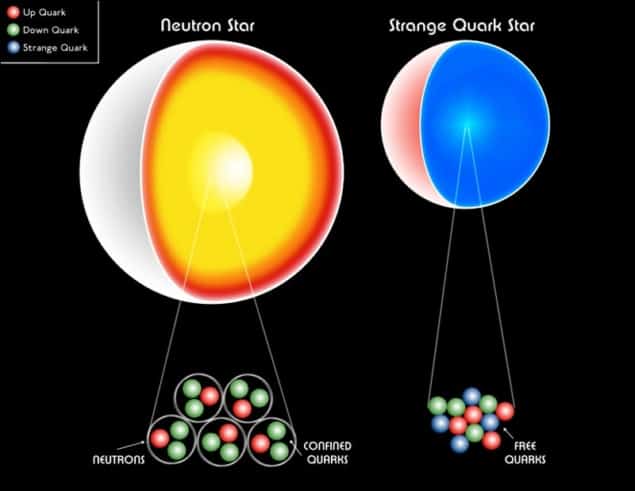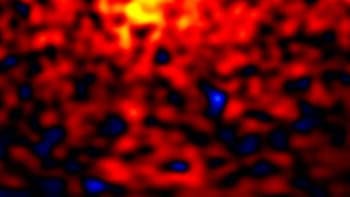
For a large star, death is a bit of a squeeze. Once its nuclear fuel is spent, its core collapses, sparking a dramatic supernova explosion that blasts away the outer layers. The body left is a cold, tightly packed sphere called a neutron star, which, if massive enough, makes the ultimate collapse to a black hole.
The huge pressures inside neutron stars mean that all electrons and protons have joined so only neutrons remain. Near the centre, according to theory, these neutrons sometimes decompose into a sea of quarks, or so-called strange quark matter. A recent theory implies that this matter could form a stable ground state of nuclear matter – suggesting the existence of standalone “quark stars”.
Evidence for quark stars is in short supply, with only a handful of observed candidates. Yet new calculations by an international group of theorists paint a better picture of the nature of quark stars, and suggest that they might be easier to spot than previously thought. “The main conclusion of our work is that there is a clear signature for the possible detection of quark stars – and thus stable strange quark matter,” says author Aleksi Vuorinen of the University of Bielefeld in Germany.
Applying perturbation theory
Vuorinen joined forces with Aleksi Kurkela at ETH Zurich in Switzerland and Paul Romatschke at the University of Washington in Seattle to examine how the pressure of strange quark matter depends on its density – a relationship described by the star’s “equation of state”. Physicists have looked at this before, but only using highly simplified models of quark interactions. Instead, Vuorinen’s group has employed perturbation theory – a technique that approximates mathematical solutions in stepwise fashion, which on the whole is far more accurate.
The result may surprise other physicists. Current thinking has it that quark stars should be smaller than neutron stars, and indeed that compact stars above a certain size – typically about twice the mass of our Sun, or two solar masses – must be pure neutron stars with no quark core. However, Vuorinen’s group conclude almost the opposite: that the biggest quark stars can be larger than neutron stars, perhaps up to 2.5 solar masses. In other words, as Vuorinen points out, the detection of a compact star with a mass near that limit would be a “strong indication” of a quark star.
Such a detection would be of great interest to astrophysicists, because it would open a window onto the properties of strange quark matter. Unlike hot quark matter, or a “quark gluon plasma”, which can be studied at particle accelerators like the Large Hadron Collider at CERN, strange quark matter is impossible to create in the lab at present.
Controversial conclusions
Thomas Schaefer, a quark physicist at North Carolina State University in the US, thinks it is a “very interesting paper”, even though he says that some of the conclusions will be controversial. “I actually tend to agree with what the authors say [on the potential size of quark stars],” he adds.
But others are not so sure. Mark Alford at Washington University in St Louis, Missouri, notes that the perturbation theory used by Vuorinen’s group is only truly accurate when the quarks are millions of times denser than in real neutron stars. “When they talk about neutron stars, they are extrapolating their calculation into a region where it is not reliable,” he says. “However, this is an improvement on what was available beforehand…this paper is actually a real step forwards.”
The study is available as a preprint at arXiv.



